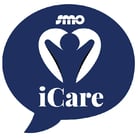

In our last post Creating an Effective Green Cleaning Policy – Pt. 1, we reviewed the typical goals, roles and responsibilities as contained within many Green Cleaning Policies. In this week’s installment we will discuss a few of the more operational aspects of a typical Policy.
Standard Operating Procedures
A typical Policy would contain procedural guidelines for the following:
- Dilution Control: Establishes the equipment and procedures used to ensure consistent and efficient chemical dilution ratios. The objective would be to reduce the volume of chemicals used without impacting their effectiveness.
- Staff Training: Sets forth the requirements for training of cleaning staff and other designated personnel. The Policy will define requirements related to: training methods, subject matter, validation and follow-up.
- Proper Handling and Storage: Defines the routines necessary to ensure safe handling, storage and disposal of all cleaning chemicals being used by the cleaning operation. Will also include procedures that specify the proper handling of chemical spills and accidents.
- Conservation of Water, Energy and Chemicals: Sets forth guidelines for the use of tools, systems, and processes that promote conservation of cleaning supplies, water and other resources.
- Improved Hand Hygiene: Establishes guidelines for maintenance of proper hand hygiene. Defines proper installation and use of hand sanitizers and proper methods of hand-cleaning.
Purchasing of Preferred Products, Supplies and Equipment
An effective Green Cleaning Policy will provide guidance on the following:
- Purchase of Preferred Cleaning Tools and Equipment: Guidelines for the purchase of new, or replacement, cleaning equipment. This will include vacuum cleaners, burnishers, scrubbers, etc. The Policy will define the preferable performance, safety and certification characteristics for each identified piece of equipment (e.g. CRI’s Green Label Vacuum Cleaner).
- Purchase of Preferred Cleaning Products and Supplies: This section of the Policy will establish the product certifications required for the products and supplies being purchased. This could include requirements for certifications such as “Green Seal”, “EcoLogo” or recognition by the U.S. Environmental Protection Agency (“DfE”). The Policy will specify proper measurement and application parameters for the products and supplies. Products and supplies covered would include: general purpose cleaners, disinfectants, carpet cleaners, odor control, disposable paper products, hand-soaps, etc.
Quality Assurance and Continuous Improvement
This section of the Policy will establish the framework to ensure consistent delivery of high-quality green cleaning services to the operation’s clients (external or internal). The Policy will also provide guidelines on how to effectively adopt a mindset of continuous improvement within the cleaning operation. This could include guidance on the design and implementation of Customer Satisfaction Surveys, Employee Satisfaction Surveys, Employee Process Improvement Suggestions, etc.
The Policy will also establish the routines for inspection of internal and/or external facilities to validate the performance of the cleaning operation. Methods for implementation of required corrective action(s) may also be covered.
If you are considering developing a Green Cleaning Policy for your operation, you can use as an example the U.S.Green Building Council’s Green Cleaning Policy Template.
Do you have an effective green cleaning policy in place? Let us know in the section for comments below.
And if you need a customized, cost-effective Service Solution for your business, let SMO help. Request a Customized Service Solution today.









